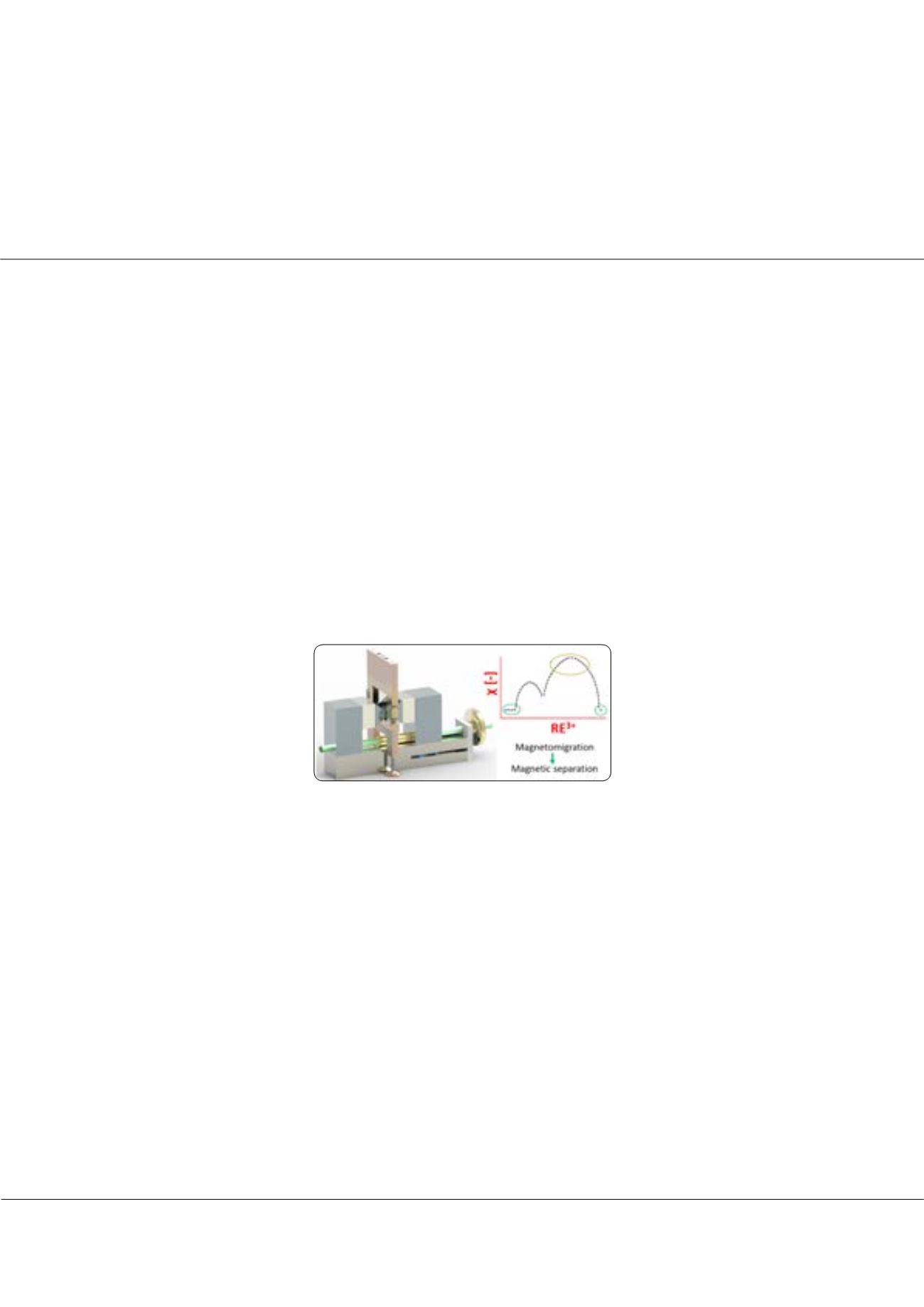

Page 51
conferenceseries
.com
Volume 6
Research & Reviews: Journal of Material Sciences
ISSN: 2321-6212
Magnetic Materials 2018
October 22-23, 2018
October 22-23, 2018 | Rome, Italy
3
rd
International Conference on
Magnetism and Magnetic Materials
A step towards magnetic separation of rare earth ions
Liubov Lukina
KU Leuven, Belgium
R
are earth metals are critical elements for many high-tech applications, e.g. electric vehicles, wind power generators and
electronics. Due to the scarcity of rare earth metal supplies in Europe, it is clear that new efficient, environmentally friendly
and cheap methods for separating rare earth metals from electronic and mining waste are needed. Currently used solvent
extraction process is time-consuming and not efficient. In this context, magnetic separation of rare earth ions looks promising.
Magnetic separation is a well-established method used in ore processing, food industry, biomedical diagnostic etc. The method
of magnetic separation is based on the fact that REM have different magnetic susceptibilities: some of the rare earth ions are
strongly paramagnetic (Dy
3+
, Ho
3+
), which means that they move towards the magnet; the other rare earth ions are diamagnetic
(Sc
3+
, Y
3+
, Lu
3+
), hence they will move away from the magnet. Particles, cells and molecules easily undergo separation in a
magnetic field. However, magnetic separation of ions has not been reported since 1950s. In this work, magnetomigration
of rare earth ions was investigated using a separation device. The separation device featured a 2.5 ml
3
cell where rare earth
solution was enclosed and circulated due to natural convection. Magnetic field was applied to the device using a magnetic
yoke setup. Enrichment of paramagnetic Dy
3+
ions in the paramagnetic fraction was achieved. Simulation of the experimental
system in Comsol 5.2 is allowed to verify the observed fluid flow and temperature patterns. Magnetomigration is the first step
to magnetic separation of rare earth ions.
Figure 1:
Left: magnetic separation device and magnetic yoke; Right: graph of magnetic susceptibilities of rare earth ions.
Recent Publications
1. Yang X et al. (2014) Magnetic separation of paramagnetic ions from initially homogeneous solutions. IEEE Transactions
on Magnetics 50:1–4.
2. Pulko B et al. (2014) Magnetic separation of Dy (III) ions from homogeneous aqueous solutions. Applied Physics Letters
105(23):232407.
3. Ji B et al. (2016) Segregation behavior of magnetic ions in continuous flowing solution under gradient magnetic field.
Chinese Physics B 25:074704.
4. Rodrigues I R et al. (2017) Magnetomigration of rare-earth ions triggered by concentration gradients. The Journal of
Physical Chemistry Letters 8:5301–5305.
5. Lei Z et al. (2017) Evaporation-assisted magnetic separation of rare-earth ions in aqueous solutions. The Journal of
Physical Chemistry C 121:24576–24587.
Biography
Liubov Lukina obtained her Engineer diploma from the National Mineral Resources University in Saint Petersburg, Russia in 2015. Subsequently, she completed the
Master program in Chemical Engineering in Lappeenranta University of Technology, Finland in 2016. Since her Master thesis work concerned separation of rare earth
metals, she decided to pursue researching this direction. Currently, she is working on her Doctoral thesis on the border of Chemistry, Physics and Engineering in University
of KU Leuven in Belgium. She hopes that her work will help developing green methods for rare earth metal recycling from electronic and mining waste.
liubov.lukina@kuleuven.beLiubov Lukina, Res. Rev. J Mat. Sci. 2018, Volume 6
DOI: 10.4172/2321-6212-C6-029
















